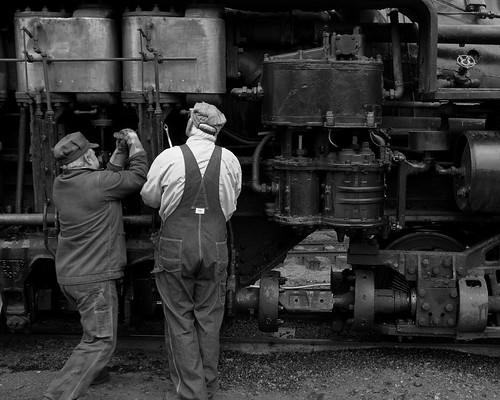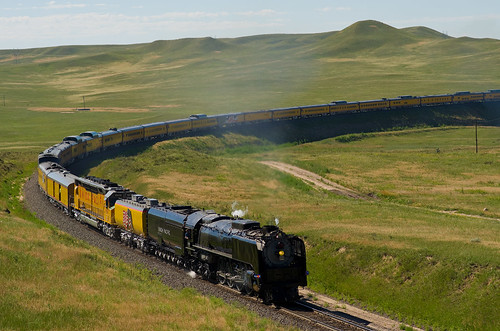Property speculators and railroads were anxious to entice settlers and pioneering families to come west and generate revenue by living and working out there. While trappers and later miners were eager to make a fortune off the land, farmers, tradesmen and other people that make lasting communities weren't typically as anxious to risk all in a move out west. Unscrupulous promoters wrote fifictitious accounts, one even going so far as to claim that steam boats were departing daily at Denver on the South Platte River. As you can see from this photo, even with modern-day dams keeping the South Platte flowing year round, the river--if you can call it that--would not be navigable by such craft. Such fiction was unfortunately common and many would-be settlers would not trust written accounts. Therefore, it was all the more important that photographs were taken and reproduced as much as possible showing Colorado to be a land open to new settlers and the skills they had or were willing to learn. Photos that depicted the scenic wonders of the west were just as helpful in promoting the nascent tourism industry.
Railroad travel and tourism in Colorado got a healthy boost from the work of William Henry Jackson, whose photographs brought on a continuous flow of curious and moderately wealthy tourists who had never seen such drama and beauty. One such photograph is of Toltec Gorge along the Denver & Rio Grande Railroad. Jackson made trips up and down the line in a photographer's special train that usually included a mobile dark room for his plate glass negatives. His train is just barely visible (top right) from this point in the canyon, nearly 800 feet below the tracks.
Cumbres & Toltec Scenic Railroad, which took the Rio Grande's property and turned it into a thriving heritage railroad.
If you are interested in the history, the Colorado Railroad Museum has a new exhibit, Trains and Tourism in Colorado. It opened this summer and has a great deal of historic artifacts. Imagine columbines, Colorado's state flower, being gathered by the armful on "Wildflower Excursions" over a century ago, where the ticket was $1.50, which would be about $34.92 today.1


![[No. 1021. Rio de los Pinos, (Rio San Antonio) and rock formations in the Toltec Gorge, Rio Arriba County, New Mexico. Shows a Denver and Rio Grande Railroad train near the Toltec tunnel high on the rock cliff].](http://farm4.static.flickr.com/3228/2679986173_a2676be6f1_o.jpg)






